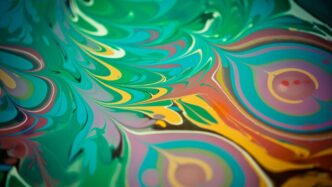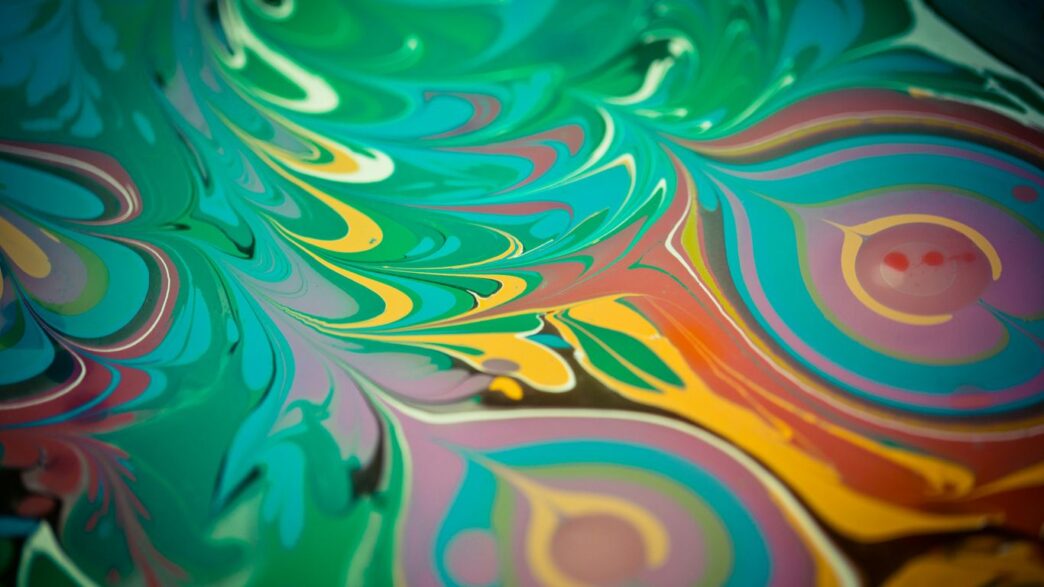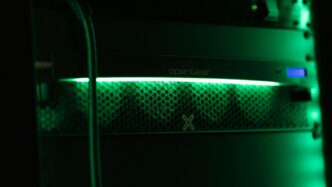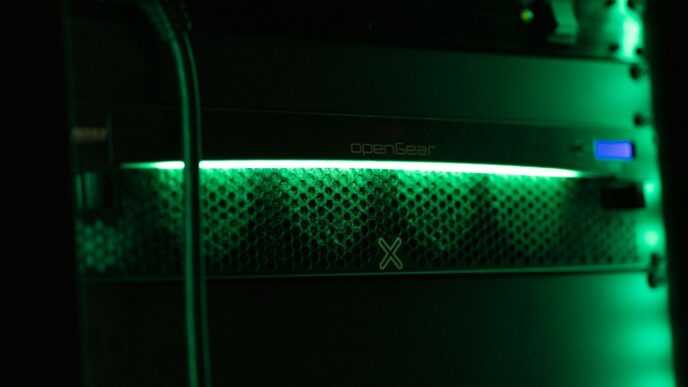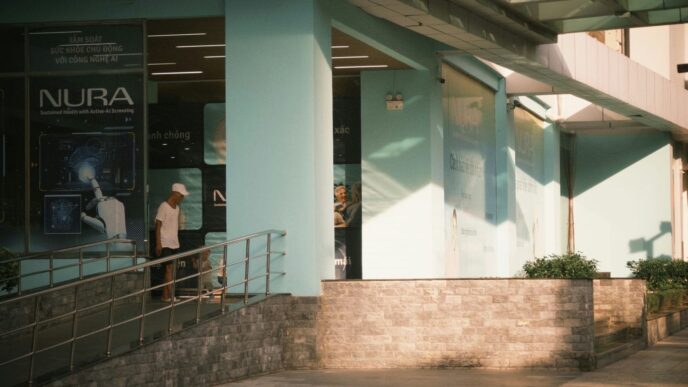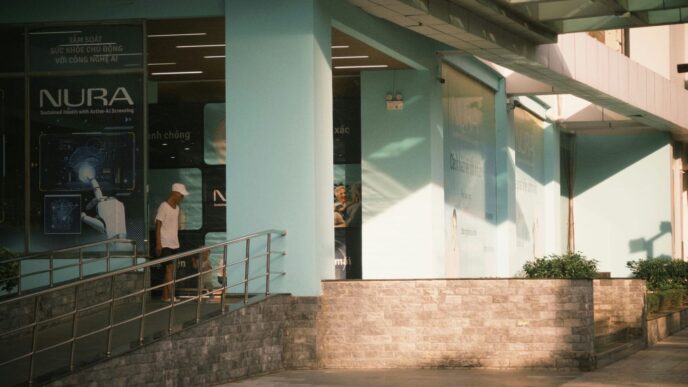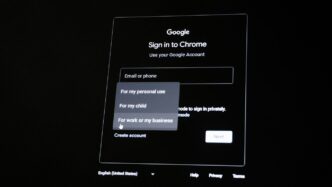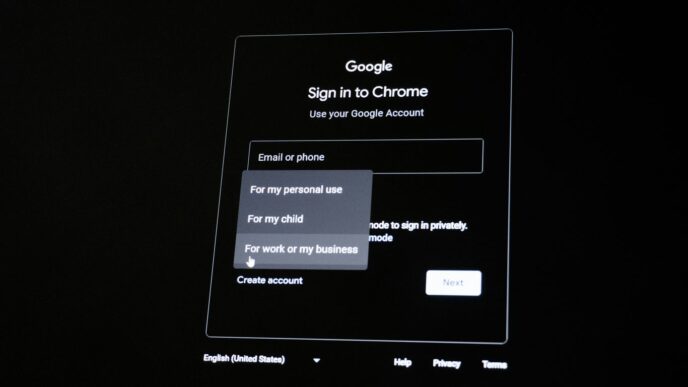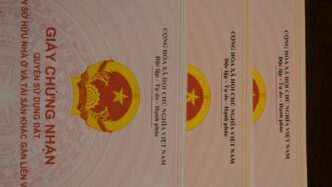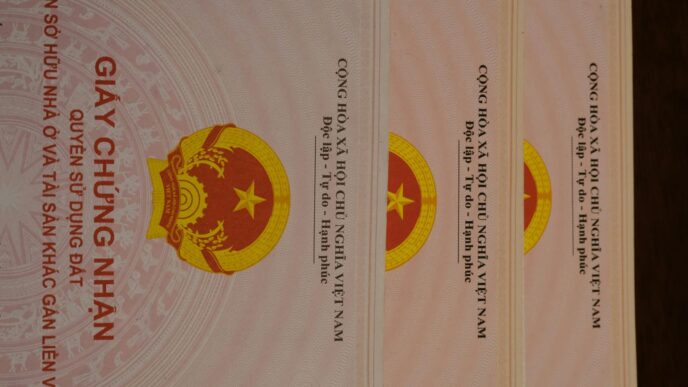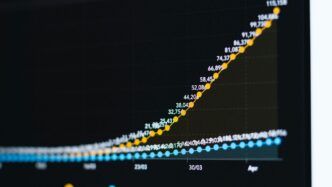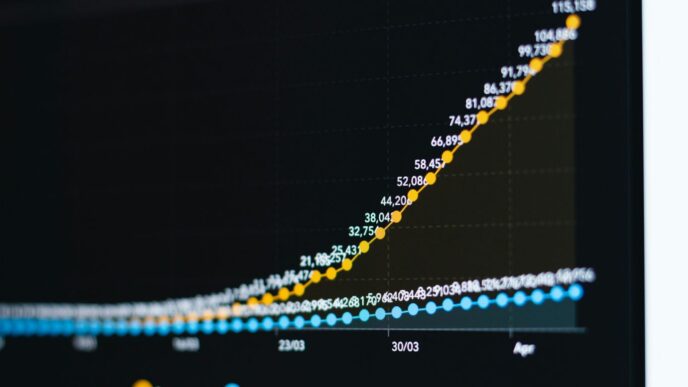Understanding Text To Image AI
It’s pretty wild, right? You type some words, and suddenly, a picture appears. That’s the basic idea behind text-to-image AI. Think of it like having a super-talented artist who can draw anything you describe, but instead of talking to them, you’re typing. This technology has been around for a bit, but it’s gotten really good, really fast. It’s not just about making pretty pictures; it’s changing how we create things.
The Magic of AI-Generated Images from Text
So, how does this magic actually happen? Well, these AI systems have been trained on a massive amount of images and their descriptions. They learn to connect words with visual elements. When you give them a prompt, like ‘a fluffy cat wearing a tiny hat sitting on a stack of books,’ the AI pulls from everything it’s learned to piece together an image that matches your words. It’s like a visual dictionary that can also paint. The results can be surprisingly detailed and often capture a mood or style you didn’t even explicitly ask for, just by the way you phrased your request.
Key Benefits of AI Image Generators
Why should you care about this? For starters, it’s a huge time saver. Instead of spending hours trying to find the perfect stock photo or hiring a designer, you can generate something unique in minutes. It also opens up creative doors you might not have known existed.
Here are a few big pluses:
- Visualizing ideas quickly: Got a concept for a blog post, a social media update, or even a product? You can see it visually almost instantly.
- Personalized visuals: Need an image that’s exactly what you’re thinking of? AI can create custom graphics that fit your specific needs, which is great for branding.
- Inspiration boost: Sometimes, seeing what the AI comes up with can spark new ideas you hadn’t considered.
- Accessibility: You don’t need to be a professional artist to create compelling visuals anymore. If you can write a sentence, you can create an image.
The Evolution of AI Artistry
This isn’t the first time computers have tried to make art, but it’s definitely the most impressive. Early attempts were pretty clunky, often producing abstract or nonsensical results. Now, though, the AI can create images that look like they were made by a human artist, complete with different styles – from photorealistic to painterly. It’s like going from a child’s crayon drawing to a masterpiece, all within a few years. The technology is constantly improving, getting better at understanding complex requests and producing higher quality images. It’s a fast-moving field, and what seems cutting-edge today will likely be standard tomorrow.
Exploring the Best Text To Image AI Tools
So, you’ve got this idea, right? And you want to see it as a picture, but maybe you can’t draw a stick figure to save your life. That’s where these text-to-image AI tools come in. They’re pretty wild, honestly. You type in what you’re imagining, and poof, the AI tries to make it happen. It’s like having a super-fast, slightly unpredictable artist on call.
Visualizing Concepts with AI
Think of it this way: you’re trying to explain a new product idea to someone, or maybe you just have a weird dream you want to see. Instead of spending ages trying to sketch it out or find stock photos that are almost right, you can just describe it. Want a ‘fluffy cat wearing a tiny crown riding a unicycle through a field of sunflowers’? Type it in. The AI will take that description and churn out an image. It’s a game-changer for getting abstract ideas down into something concrete you can actually look at. This is super handy for brainstorming, creating mood boards, or just generally seeing if your wild ideas have any visual legs.
Seamless Integration with Creative Workflows
Okay, so these tools aren’t just for messing around. Many of them can actually fit into what you’re already doing. If you use design software, some AI generators can work right alongside it. This means you can whip up custom graphics for a blog post, social media, or even a presentation without leaving your main program. It speeds things up a lot. Imagine needing a specific kind of background for a graphic – instead of searching endlessly, you can generate it in seconds. It makes the whole process feel less like a chore and more like a creative partnership.
Finding Your Ideal AI Art Companion
With so many options out there, picking the right one can feel a bit overwhelming. They all have their quirks and strengths. Some are better at photorealistic images, others excel at artistic styles. Some are free to try, while others have more advanced features if you pay. It really comes down to what you need them for.
Here are a few things to think about when you’re picking one:
- What kind of images do you want? Realistic photos, cartoons, abstract art?
- How easy is it to use? Are you okay with a bit of a learning curve, or do you need something super simple?
- What’s your budget? Many offer free trials or limited free use, but for heavy use, you might need a subscription.
- Do you need commercial rights? Make sure the tool allows you to use the images for business if that’s your plan.
It’s worth trying out a few different ones to see which one clicks with your way of working. You might find that one tool is perfect for quick social media posts, while another is better for more detailed illustrations.
Mastering AI Image Generation Prompts

So, you’ve got your AI image generator picked out, and you’re ready to start making some cool stuff. But how do you actually tell the AI what you want? That’s where prompts come in. Think of them like giving directions to a super-talented, but slightly literal, artist. The better your directions, the closer you’ll get to the picture in your head.
Crafting Detailed Descriptions for AI
This is probably the most important part. If you just type "a dog," you’re going to get a dog, sure, but it could be anything. A chihuahua? A Great Dane? A cartoon dog? A dog made of cheese? The AI doesn’t know. You need to be specific. Instead of "a dog," try "a fluffy golden retriever puppy playing fetch in a sunny park." See the difference? You’ve added breed, action, and setting. The more descriptive you are, the more the AI has to work with.
Here’s a little breakdown:
- Subject: What is the main thing in the image? (e.g., a knight, a spaceship, a teacup)
- Action: What is the subject doing? (e.g., riding a dragon, landing on Mars, steaming gently)
- Setting: Where is this happening? (e.g., a medieval castle, a red planet, a cozy kitchen)
- Details: What specific features should it have? (e.g., wearing shining armor, with smoke trails, with a floral pattern)
Incorporating Stylistic Guidance
Once you’ve got the basics down, you can start telling the AI how you want it to look. This is where style comes in. Do you want it to look like a photograph? A painting? A cartoon? You can even specify art movements or artists.
- Artistic Medium: "oil painting," "watercolor," "pencil sketch," "digital art"
- Artistic Style: "impressionist," "surrealist," "cyberpunk," "art deco"
- Artist Influence: "in the style of Van Gogh," "inspired by H.R. Giger"
- Visual Qualities: "photorealistic," "cinematic lighting," "low poly," "pixel art"
For example, you could take "a fluffy golden retriever puppy playing fetch in a sunny park" and add "in the style of a Studio Ghibli animation." Suddenly, you’ve got a whole different vibe.
Adding Emotional Context to Prompts
This is where you can really get creative. How do you want the image to feel? You can add words that describe the mood or atmosphere.
- Mood: "serene," "chaotic," "nostalgic," "joyful," "melancholy"
- Atmosphere: "misty morning," "stormy night," "golden hour glow," "eerie silence"
So, "a fluffy golden retriever puppy playing fetch in a sunny park, in the style of a Studio Ghibli animation" could become "a joyful, fluffy golden retriever puppy playing fetch in a sun-dappled park, with a sense of wonder, in the style of a Studio Ghibli animation." It’s all about painting a picture with your words, and the more colors and textures you add, the more vibrant your final image will be.
Advanced Features in AI Image Creation

So, you’ve gotten the hang of making basic images with AI, which is pretty cool. But what if you want to get a bit more specific, or make sure things look just right? That’s where the advanced stuff comes in. It’s like going from a simple sketch to a fully polished piece of art.
Achieving Perfect Text in AI Images
Remember when AI images often had weird, jumbled text? Like a sign that said ‘HAPP Y BIRT HDAY’? Yeah, that was a common problem. Now, many tools can actually put readable text into your images. You can add signs, labels, or even text on clothing without it looking like a mess. This means you can create graphics for marketing or social media that have clear messages without needing extra editing later. It’s a big step up from just hoping the AI got the letters right.
Creating Consistent Characters with AI
Ever wanted to have the same character show up in multiple images, maybe in different outfits or poses, and have them look exactly the same? It used to be a real headache. Now, you can train an AI to recognize a specific character. This is super handy if you’re telling a story, making a comic, or even just want a consistent brand mascot. You can upload a photo of a person or character, and the AI will do its best to keep them looking the same no matter what you ask it to do next. It’s like having your own digital actor who never forgets their lines or their face.
Customizing Images with Inpainting
Inpainting is a neat trick that lets you change just a part of an image. Imagine you have a picture of a park, but you want to swap out a bench for a dog. With inpainting, you can select the bench area and tell the AI to replace it with a dog. It’s not just about replacing things, either. You can use it to add details, remove unwanted objects, or even change someone’s hairstyle or clothing. It gives you a lot more control over the final image without having to start from scratch. It’s like having a digital eraser and paintbrush that understands your instructions.
Leveraging Text To Image AI for Business
It’s pretty wild how AI can now whip up images just from a few words. For businesses, this isn’t just a cool party trick; it’s a real game-changer. Think about it – you need a picture for your website, a social media post, or even a product catalog. Instead of hiring a photographer or spending hours with a graphic designer, you can just describe what you want and let the AI do the heavy lifting. This technology is making professional-quality visuals accessible to everyone, no matter their budget or design skills.
Personalized Brand Imagery with AI
Every business wants its brand to stand out, right? AI image generators let you create visuals that perfectly match your brand’s look and feel. You can describe your company’s colors, style, and even the mood you want to convey, and the AI will generate images that fit. This means your marketing materials, website, and social media can all have a consistent and unique visual identity. It’s like having a personal art director on call 24/7.
Streamlining Product Mockup Creation
Imagine you’ve designed a new t-shirt or a coffee mug. Before, you’d have to get a physical sample made or use complicated software to create a realistic mockup. Now, you can simply type in a description like "a vintage-style t-shirt with a minimalist mountain graphic" and the AI can generate a photo-realistic image of your product. Some tools even let you place your design directly onto a model, showing how it looks in real life. This saves a ton of time and money, especially for online stores.
Here’s a quick look at how it speeds things up:
- Concept to Mockup: Describe your product and see it visualized in seconds.
- Model Integration: Place designs on virtual models to see fit and style.
- Cost Savings: Reduce expenses on photoshoots and physical samples.
- Faster Launches: Get your products to market quicker with ready visuals.
Generating Marketing Visuals at Speed
Need a banner for a sale? An eye-catching image for an ad campaign? AI can generate these visuals incredibly fast. You can experiment with different ideas and styles without a big time commitment. If you’re running a promotion, you can quickly create a variety of images to see which ones perform best with your audience. This agility is super helpful in the fast-paced world of marketing. You can even update text on existing images easily, which is great for time-sensitive promotions or correcting details without starting over.
The Future of Visual Content Creation
It feels like just yesterday we were marveling at the first AI-generated images, and now? Well, things are moving at a pace that’s almost hard to keep up with. The way we make visuals is changing, and it’s becoming available to way more people than ever before. This isn’t just about making pretty pictures; it’s about changing how we communicate ideas visually.
Democratizing Creativity with AI
Think about it: not everyone has the skills of a professional artist or the budget for a design team. AI image tools are changing that. Now, someone with a great idea can describe it and see it come to life, no matter their technical background. It’s like giving everyone a personal art studio. We’re seeing millions of images created daily, and that number is only going up. This means more unique visuals for blogs, social media, and personal projects, all without needing to be a Photoshop wizard.
The Growing Impact of AI Art
AI art isn’t just a novelty anymore. Businesses are using it for everything from marketing materials to product mockups. Imagine needing a specific image for an ad campaign – instead of searching through endless stock photos or hiring a photographer, you can generate exactly what you need in minutes. This speed and customization are huge. We’re also seeing AI art pop up in more personal ways, like custom avatars or unique illustrations for stories. It’s becoming a normal part of our visual landscape.
Innovations in AI Image Generation
The tech behind these tools keeps getting better. We’re moving beyond just basic image creation. Here are a few things to watch out for:
- Smarter Understanding: AI will get even better at understanding complex or nuanced descriptions, leading to more accurate images.
- Style Consistency: Creating a character or a scene that looks the same across multiple images will become much easier.
- Interactive Creation: Imagine AI that can adjust an image based on your mood or feedback in real-time.
- Integration: These tools will likely become even more integrated into the software we already use for design and content creation.
It’s an exciting time, and the tools we have today are just the beginning. The future looks pretty visual, and thankfully, it seems like it will be a lot more accessible too.
Wrapping It Up
So, we’ve gone through a lot about these AI image tools. It’s pretty wild how you can just type something and get a picture, right? It feels like magic, but it’s really just smart tech. Whether you’re trying to make cool graphics for your blog, come up with ideas for a project, or just have some fun, these AI generators are a big help. They’re getting better all the time, and it’s exciting to think about what they’ll be able to do next. Don’t be afraid to play around with them and see what you can create. You might surprise yourself with what you come up with.

